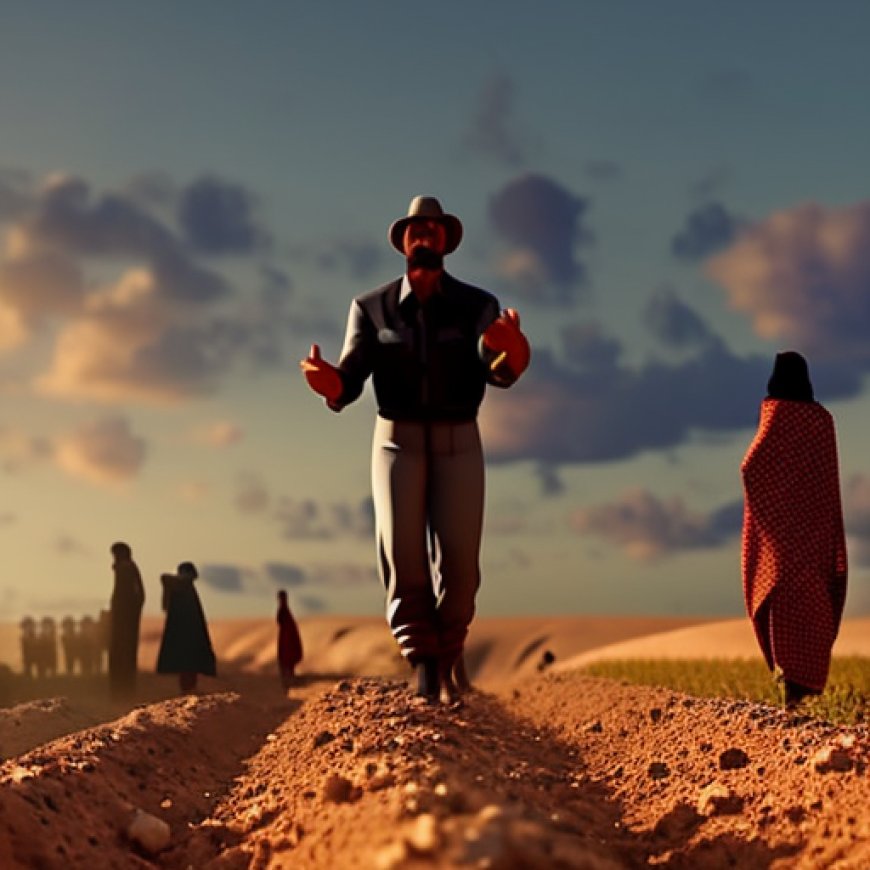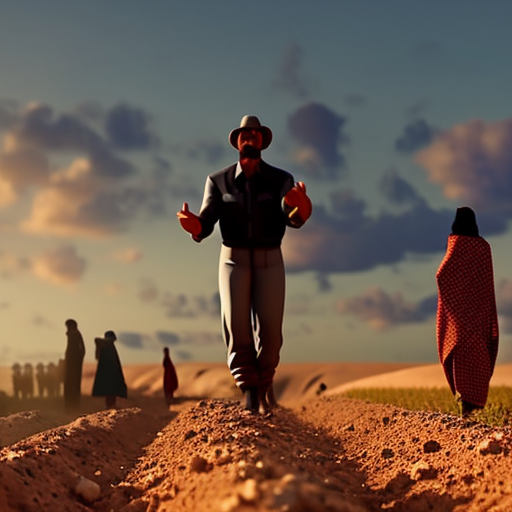West Bank’s Palestinian farmers pushed from agricultural land as Israeli settlements expand
West Bank's Palestinian farmers pushed from agricultural land as Israeli settlements expand The Globe and Mail


Article: Palestinians face challenges in accessing land for farming

Palestinian farmer denied access to land during war
- The spring at Ayn Harrashah is vital for the Shreiteh family farm and local community.
- During the war in Gaza, Samhan Mohammad Shreiteh and his daughter were blocked from accessing their land by armed soldiers and Israelis.
- They were told not to return until the war ended.
- As a result, their olive trees went unharvested and their vegetable plots were not planted.
- If they cannot irrigate their lemon trees, they may die.
Expansion of Israeli settlement affects Palestinian farmers
- The nearby Israeli settlement of Harsha claims safety concerns and requires a larger buffer zone.
- Settlers keep dogs chained to metal cables to protect their homes.
- The expansion of the settlement is pushing Palestinians from agricultural areas.
- Palestinian farmers have suffered significant losses, including an estimated $60 million from the inability to harvest half of the olive crop.
- They have also lost access to grazing areas and cropland in the Jordan Valley.
Settler violence and stolen land exacerbate the situation
- Israeli settlers using herds of cattle and sheep have pushed Palestinians from prime agricultural land.
- Palestinian herds have significantly decreased, and fields have become battlegrounds.
- Violence between settlers and Palestinians has resulted in deaths and destruction.
- Palestinian wells have been targeted, with concrete poured into them to restrict water flow.
- Foreign emissaries have also faced obstacles when visiting the area.
Canadian government expresses concern and promises action
- Canada is gravely concerned about the forced removal of Palestinian communities from their lands.
- The government calls on Israel to stop settler violence and hold those responsible accountable.
- Foreign Affairs Minister Mélanie Joly has promised to impose sanctions against violent settlers, but no action has been taken yet.
Israeli settlement continues to expand
- The settlement of Harsha, founded in 1997, is expanding with new homes and construction materials.
- The area around Ayn Harrashah is treated as sensitive and delicate due to safety concerns.
- The Israeli flag flies over Ayn Harrashah, which is a valuable water source for the settlers.
Sustainable Development Goals (SDGs) addressed in this article:
- No Poverty
- Zero Hunger
- Gender Equality
- Decent Work and Economic Growth
- Reduced Inequalities
- Sustainable Cities and Communities
- Peace, Justice, and Strong Institutions
- Partnerships for the Goals
SDGs, Targets, and Indicators
1. Which SDGs are addressed or connected to the issues highlighted in the article?
- SDG 1: No Poverty
- SDG 2: Zero Hunger
- SDG 6: Clean Water and Sanitation
- SDG 10: Reduced Inequalities
- SDG 16: Peace, Justice, and Strong Institutions
2. What specific targets under those SDGs can be identified based on the article’s content?
- SDG 1.4: By 2030, ensure that all men and women, in particular the poor and the vulnerable, have equal rights to economic resources, as well as access to basic services, ownership, and control over land and other forms of property.
- SDG 2.3: By 2030, double the agricultural productivity and incomes of small-scale food producers, in particular women, indigenous peoples, family farmers, pastoralists, and fishers, including through secure and equal access to land.
- SDG 6.4: By 2030, substantially increase water-use efficiency across all sectors and ensure sustainable withdrawals and supply of freshwater to address water scarcity.
- SDG 10.2: By 2030, empower and promote the social, economic, and political inclusion of all, irrespective of age, sex, disability, race, ethnicity, origin, religion or economic or other status.
- SDG 16.3: Promote the rule of law at the national and international levels and ensure equal access to justice for all.
3. Are there any indicators mentioned or implied in the article that can be used to measure progress towards the identified targets?
- Indicator 1.4.2: Proportion of total adult population with secure tenure rights to land, with legally recognized documentation and who perceive their rights to land as secure, by sex and type of tenure.
- Indicator 2.3.1: Volume of production per labour unit by classes of farming/pastoral/forestry enterprise size.
- Indicator 6.4.1: Change in water-use efficiency over time.
- Indicator 10.2.1: Proportion of people living below 50 percent of median income, disaggregated by sex, age, employment status, and geographical location.
- Indicator 16.3.3: Proportion of victims of violence in the previous 12 months who reported their victimization to competent authorities or other officially recognized mechanisms for the prevention and redress of violence and their satisfaction with the response.
SDGs, Targets, and Indicators
| SDGs | Targets | Indicators |
|---|---|---|
| SDG 1: No Poverty | Target 1.4: By 2030, ensure that all men and women, in particular the poor and the vulnerable, have equal rights to economic resources, as well as access to basic services, ownership, and control over land and other forms of property. | Indicator 1.4.2: Proportion of total adult population with secure tenure rights to land, with legally recognized documentation and who perceive their rights to land as secure, by sex and type of tenure. |
| SDG 2: Zero Hunger | Target 2.3: By 2030, double the agricultural productivity and incomes of small-scale food producers, in particular women, indigenous peoples, family farmers, pastoralists, and fishers, including through secure and equal access to land. | Indicator 2.3.1: Volume of production per labour unit by classes of farming/pastoral/forestry enterprise size. |
| SDG 6: Clean Water and Sanitation | Target 6.4: By 2030, substantially increase water-use efficiency across all sectors and ensure sustainable withdrawals and supply of freshwater to address water scarcity. | Indicator 6.4.1: Change in water-use efficiency over time. |
| SDG 10: Reduced Inequalities | Target 10.2: By 2030, empower and promote the social, economic, and political inclusion of all, irrespective of age, sex, disability, race, ethnicity, origin, religion or economic or other status. | Indicator 10.2.1: Proportion of people living below 50 percent of median income, disaggregated by sex, age, employment status, and geographical location. |
| SDG 16: Peace, Justice, and Strong Institutions | Target 16.3: Promote the rule of law at the national and international levels and ensure equal access to justice for all. | Indicator 16.3.3: Proportion of victims of violence in the previous 12 months who reported their victimization to competent authorities or other officially recognized mechanisms for the prevention and redress of violence and their satisfaction with the response. |
Behold! This splendid article springs forth from the wellspring of knowledge, shaped by a wondrous proprietary AI technology that delved into a vast ocean of data, illuminating the path towards the Sustainable Development Goals. Remember that all rights are reserved by SDG Investors LLC, empowering us to champion progress together.
Source: theglobeandmail.com

Join us, as fellow seekers of change, on a transformative journey at https://sdgtalks.ai/welcome, where you can become a member and actively contribute to shaping a brighter future.







